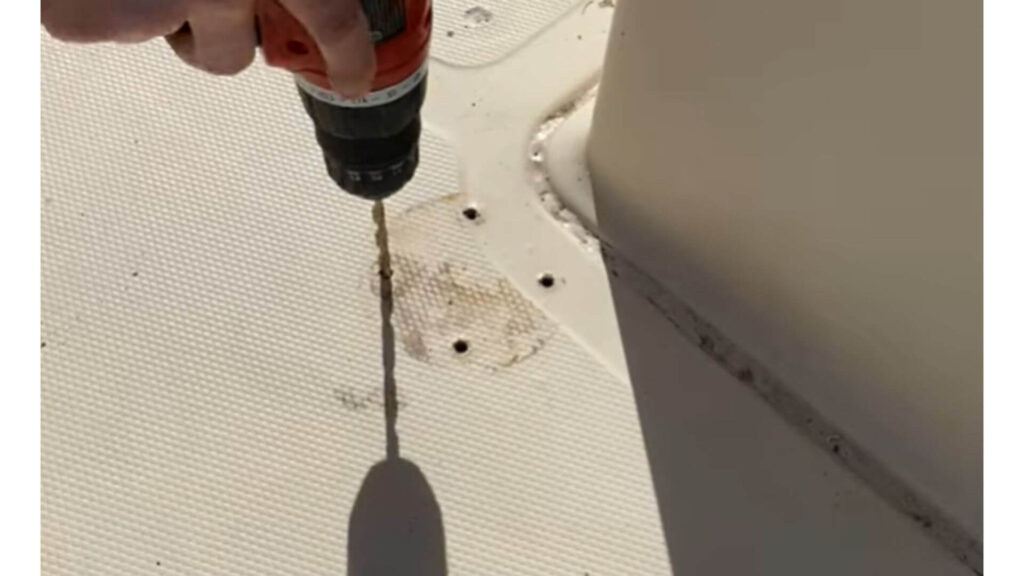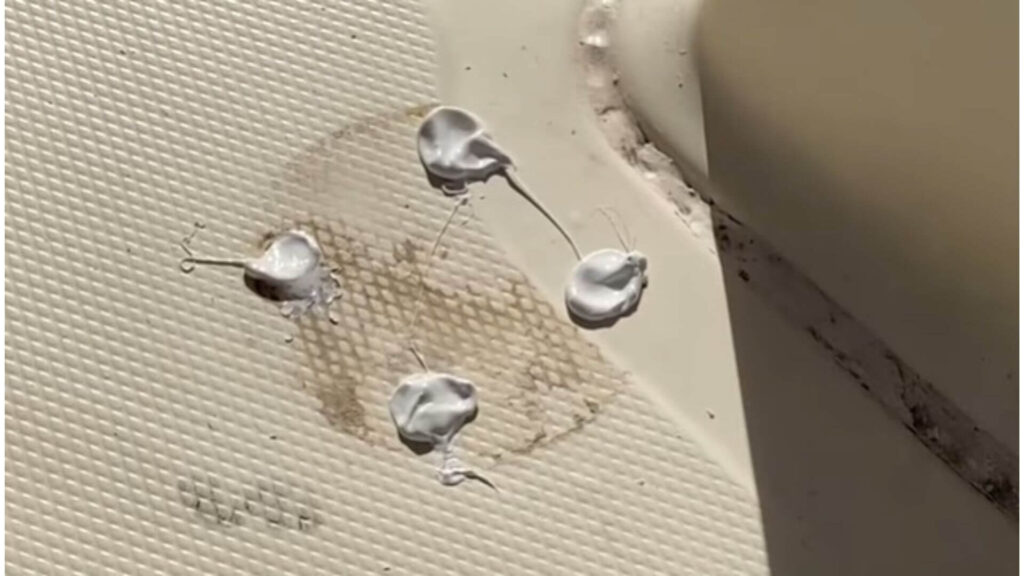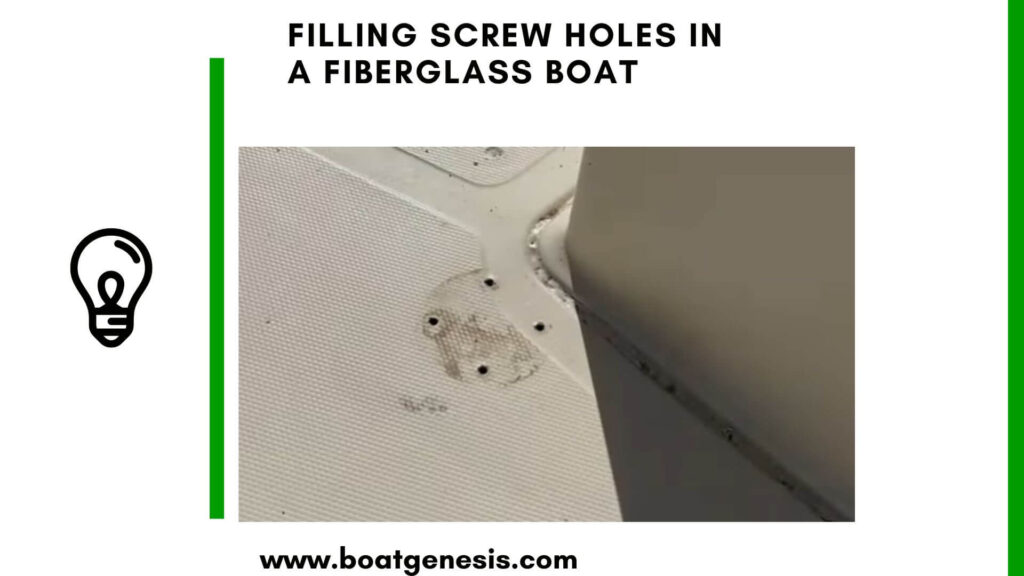We’ve all been there – a project calls for screws to be driven into a fiberglass boat surface. In the heat of the moment, little thought is given to the aftermath. Once the job is complete, you’re often left staring at damaged fiberglass with unsightly screw holes.
As a passionate DIYer, I’ve made this mistake a few times. But there’s no need to live with ugly screw holes marring your boat’s finish.
With a little time and elbow grease, those mistakes can be remedied.
In this post, I’ll walk through the process I’ve used to successfully patch screw holes in the gel coat.
Filling Screw Holes In A Fiberglass Boat
1. Assessing the Damage
Before repairing any flaw, it’s important to understand the extent of the problem.
Examine each screw hole carefully.
Check for cracks extending out from the holes and determine if only the gelcoat is damaged or if the holes go all the way through the fiberglass beneath.
Careful inspection will dictate the supplies needed for repairs.
2. Gathering Supplies
Repairing screw holes in a boat requires just a few specialized materials:
- Dremel
- Disposable gloves
- Acetone or cleaner
- Paper towels
- Mixing containers
- Stir sticks
- Fiberglass filler resin
- MEK peroxide hardener
- Synthetic bondo filler
- Fiberglass cloth
- Sandpaper (multiple grits)
- Gelcoat paint
- Paint brushes, rollers
The process involves sealing each hole with thickened epoxy, applying fiberglass cloth for reinforcement, and topping with a cosmetic gelcoat to match the finish.
Before getting started, be sure to thoroughly clean and dry the area around each screw hole.
Use a Dremel to make the hole wider, and Acetone to clean dust.

This will allow the repair materials to properly adhere.
3. Plugging Holes
With supplies gathered and holes prepped, it’s time to start filling those pesky openings.
Mix a small batch of epoxy resin per the manufacturer’s instructions, using only as much hardener as you can apply in the working time.
Adding adhesive filler to the mix will thicken it so it can be molded as needed without running through the holes.

Apply the thickened epoxy directly into and over each hole, forcing it in with a putty knife so no voids remain.
Reshape as needed once applied. Allow this filler layer to fully cure before moving to the next steps.
4. Building it Back Up (Optional)
With holes filled, reinforcement is required to restore strength. Cut pieces of fiberglass cloth slightly larger than each repair area.
Mix a fresh small batch of resin and brush over each patch area. Carefully lay the cloth pieces over the areas, pressing out any air pockets.
Allow the resin to soak through and cure.
Once hardened, sand the patches to blend with the surrounding area and provide a smooth surface for gel coat application.
Thoroughly clean sanded areas afterwards.
5. Match Gelcoat Color
For an invisible repair, match your boat’s original gelcoat color as closely as possible.
Some manufacturers offer color-match kits. Follow kit directions for mixing and applying colored gelcoat with a brush over the filled holes.
Work slowly and carefully as you rebuild the finish layer. Allow thorough curing between coats if applying more than one.
With some finesse, you can mimic the original texture.
Sand again after full cure, then buff and polish for a seamless look.
6. Polish Repaired Area
Carefully hand polish or use a variable speed buffer on low speed.
Work on a quality polishing compound to blend gloss levels. Rinse residue and apply marine wax to restore protection.
FAQ About Filling Fiberglass Screw Holes
I get lots of common questions on the best methods for patching screw holes in fiberglass boat hulls and decks. So let’s review answers to some of the most frequent inquiries:
For small screw holes, I recommend marine-grade polyester filler made for fiberglass repair. Brands like Evercoat or 3M Marine-Tex work well. It sands easily to contour with surrounding areas.
Yes, sealing the interior hole first creates a water barrier to prevent delamination or rotting later on. Use a fiberglass backing resin or thickened epoxy for best results.
1-2 layers of fiberglass cloth overfilled with putty are typically sufficient for small holes. Apply in thin coats saturated with resin allowing cure time between. Mix resin per specs.
While regular Bondo works in theory, it doesn’t adhere as well long-term in the marine environment. Stick to marine epoxy products for permanent reliable repairs.
Matching the existing gelcoat finish will give the most seamless, durable finish. But you can use quality marine enamel paints if unable to match factory colors.
Start very coarse around 80 grit to level filler with the surrounding area. Then work up to 220-400 grit for smoothing and prepping gelcoat application.
Check the manufacturer’s recommended cure times, but usually 24 hours minimum for skim coats and small fill areas. Give 72 hours for thicker rebuilt sections.
Let me know in the comment section below if you have any other fiberglass boat repair questions! I’m always happy to help.
You should also read my full guide on fixing any type of hole in a fiberglass boat here.
Final Thoughts
While filling screw holes in fiberglass boats involves some effort, the result is worth it.
With care and the right materials, repairs can be made that blend flawlessly with the surrounding finish.
Each saved piece keeps cherished memories afloat. What once marred the surface now lives on only in old photos and my memory, a reminder to exercise more care going forward.
But when missteps do happen, take heart that there’s always a fix!


